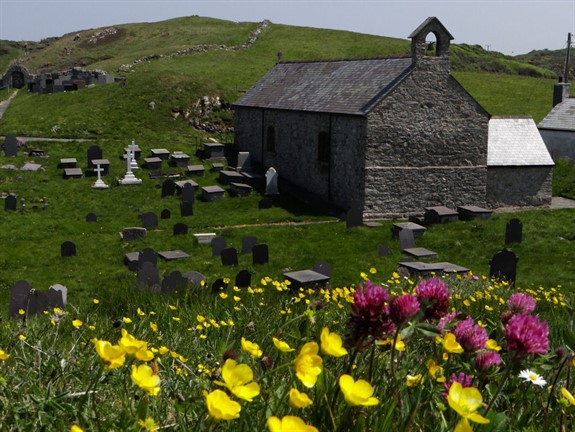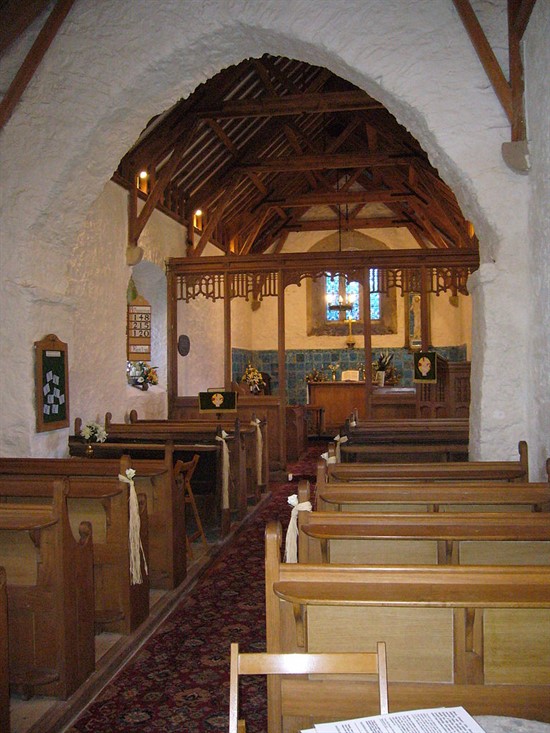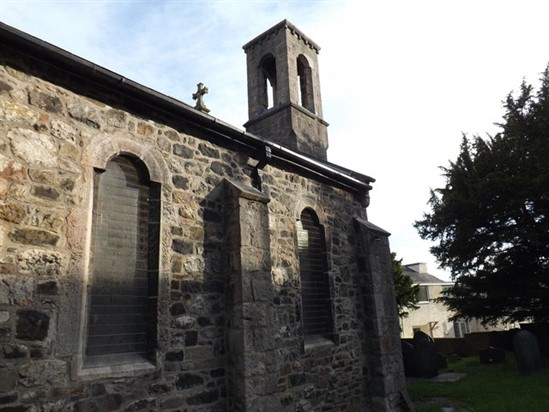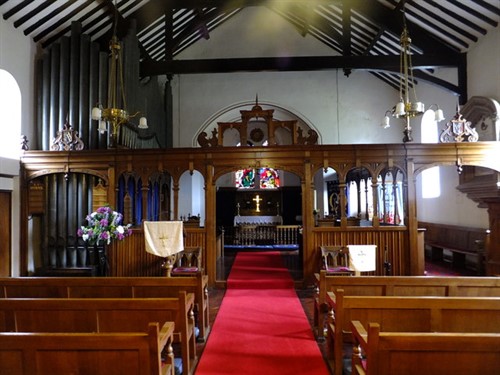Posted on 15/03/2017 by David
From ancient burial chambers to grand cathedrals….. and even remote island monasteries, there are some incredible holy places in North Wales.
In our new blog mini-series, we explore churches in North Wales with fascinating stories to tell. We hope the stories inspire you pay these churches a visit to soak up the timeless sense of place embodied by such special places.
1. Llanbadrig Church - Cemaes, Anglesey

As we near St Patrick’s Day, we thought it apt to start with the story of 5th century Llanbadrig Church.
The dramatic cliffs and rocky islands of the Anglesey coast, alongside turbulent Irish Sea tides and currents, have posed a threat to vessels sailing these waters for thousands of years. There are countless tales of shipwrecks off the north coast but this tale has particular significance.
This beautiful little church on the headland, near Cemaes Bay, is believed to have been founded by the same Patrick who became the patron saint of Ireland. It is the only church in Wales dedicated to him.
Upon approach, the church itself looks simple and unassuming, however the setting is incredible and there is so much more to discover - both inside and in the surrounding area - that brings the story of this church to life.
The story goes that while on passage to Ireland, Patrick's ship was caught in a storm and wrecked on the rocks of a small island known was Middle Mouse (later named Ynys Badrig in honour of the saint). Patrick was on his way to convert the Irish to Roman Catholicism on behalf of Pope Celestine.
Patrick, miraculously, managed to swim ashore from the island and found shelter in a cave beneath the headland (Ogof Badrig) and refreshment from a well among the rocks (Ffynnon Llanbadrig). Once recovered from his ordeal, Patrick began to build a church on the headland as an offering to God, in gratitude for saving his life.
It is believed the water from Ffynnon Llanbadrig (St Patrick’s Well) can cure sick children and ease the pain of rheumatism and toothache. It was even bottled and sold at markets across the island!
The cave and the well are, sadly, out of reach to all but the most impetuous explorer. To reach them requires a dizzying climb down the cliffs to the pebble shore below.
Just peek over the cemetery wall and you’ll see the waves crashing against the rocks, can you imagine swimming to shore from Middle Mouse like Patrick did?
The church itself has many interesting and fascinating features. Just one example is the east window, which has an intriguing Islamic inspired design. The window is a survivor of the church’s renovation in 1884, which was funded by Henry Stanley, 3rd Baron of Alderley, who was the first Muslim member of Parliament.

Aside from it’s the history and religious connotations, Llanbadrig is an incredibly peaceful spot. It’s a haven for nesting seabirds, while the headland is the perfect habitat for wildflowers. It's also a fantastic spot for enjoying the night sky as it is has very little light pollution and recently featured in our blog about stargazing in North Wales.
2. St Ffraid's Church - Glan Conwy

The site of this church has been a place of worship for over 1,500 years and, just like Llanbadrig, the parish of St Ffraid (better known as St Brigid) was founded in the 5th century.
The church is famous for its link to the dark arts because it was here that the first instance of ‘black witchcraft’ in Wales was recorded.
Witchcraft became a capital offence in 1563, but for a long time before that the term 'witch' was commonly used to refer to the local healer or wise woman.
St Ffraid's church is significant because it was the site of the investigation into allegations made against Gwen ferch Elis, a weaver who lived nearby. Gwen was renowned for her skills as a healer and even the wealthy paid her for help and advice. Unfortunately, these skills caused Gwen to become entangled in a feud between two powerful local families - the Conways and the Mostyns.
Jane Conway, a widow living at Marle Hall, had persuaded Gwen to leave an evil charm at the home of Sir Thomas Mostyn, and this landed Gwen in jail accused of witchcraft.
At the formal hearing in St Ffraid’s Church in 1594, Gwen was accused of manslaughter and many other heinous offences and was eventually convicted of murder by witchcraft. Gwen was later hanged in Denbigh town square. Gwen was one of only five witches ever executed in Wales.
Despite its associations with witchcraft, the church is a rather lovely place to visit. The building that stands today is of Romanesque architectural design and the two towers on the west gable give it a distinctly continental appearance - it resembles the medieval churches of Italy in many respects.
There are some fine examples of stained glass to admire too, with some thought to date back to the 15th century, most likely rare survivors of the Reformation.
It’s a tranquil spot right at the heart of this sleepy village. Walk further up the hill and you’ll soon find beautiful pastoral landscape and unbelievable views back over Conwy estuary and the Carneddau.
Click here to read part two in the series.

Images courtesy: Llanbadrig Church © Copyright Arthur C Harris and licensed for reuse under this Creative Commons Licence. Llanbadrig interior Tom Oates via English wikipedia. St Ffraid's exterior and St Ffraid's interior © Copyright Richard Hoare and licensed for reuse under this Creative Commons Licence.

